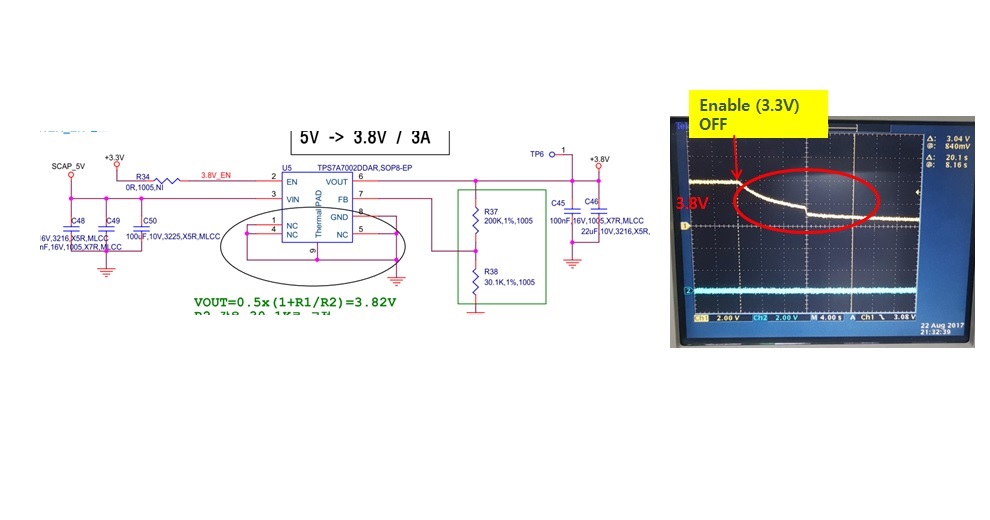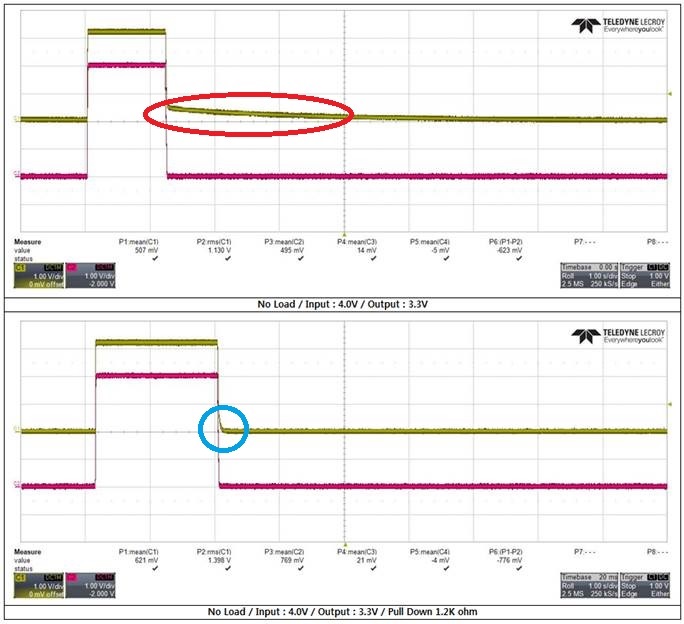Other Parts Discussed in Thread: TPS7A92, , TPS7A7001EVM-065, TPS7A53-Q1, TPS7A84A
Dear TI,
The present output voltage does not fall. (Maintain 1V)
To solve this problem, we tested the output with a pull-down resistor. (1K ohm ~ 10K ohm)
The test result was the same.



